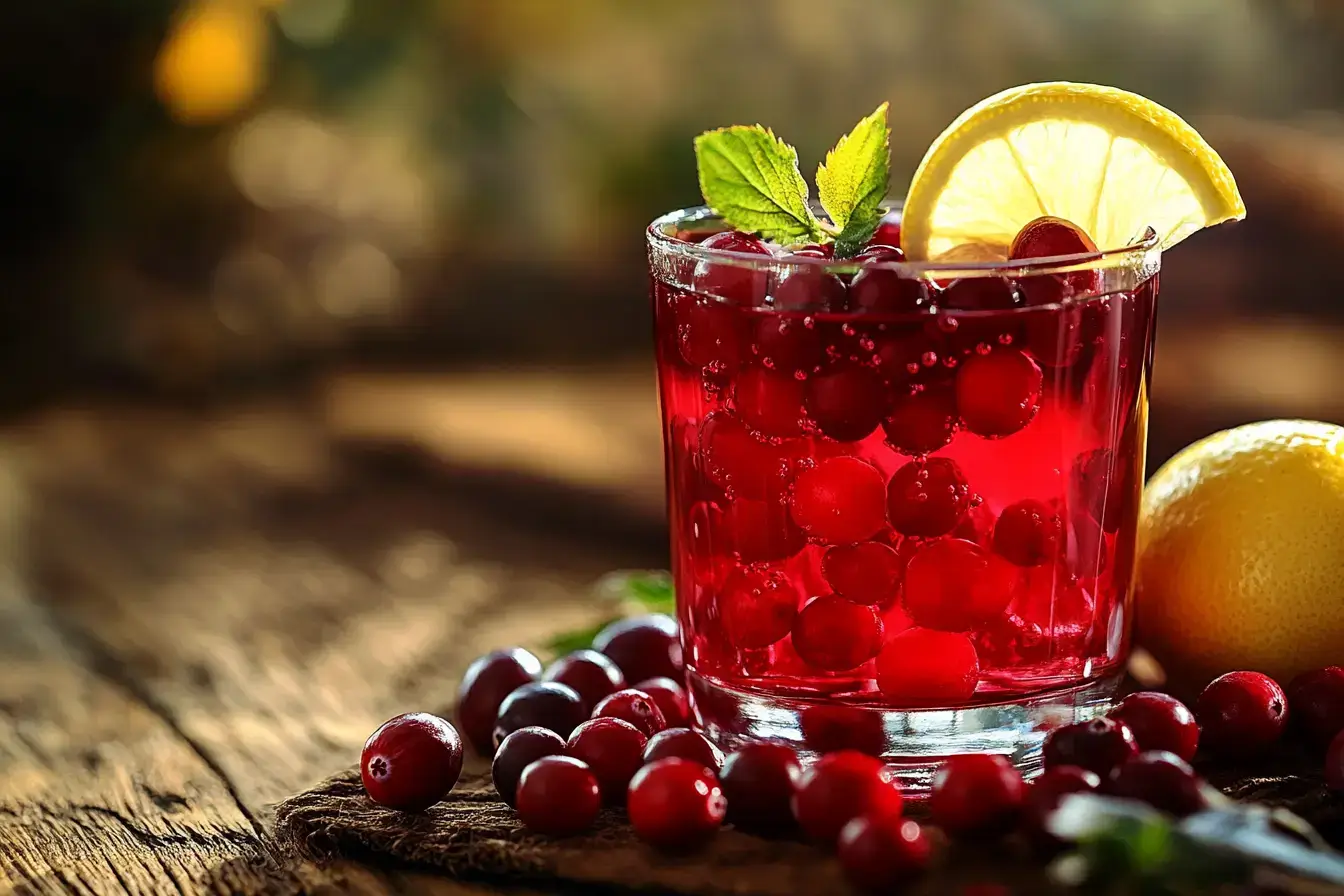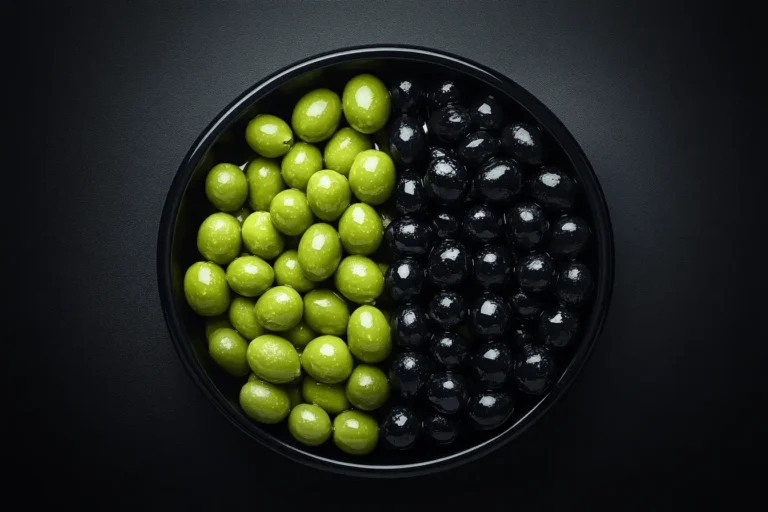What Are the Benefits of Drinking Cranberry Juice? Top 7 Reasons
Cranberry juice is not just a delicious and refreshing drink; it’s packed with numerous health benefits. Curious about what are the benefits of drinking cranberry juice? In this comprehensive guide, we’ll explore seven compelling reasons to incorporate this vibrant juice into your diet, from boosting your immune system to supporting cardiovascular health.

Why Understanding What Are the Benefits of Drinking Cranberry Juice Matters
Highlighting what are the benefits of drinking cranberry juice is crucial because cranberry juice offers a plethora of health benefits, making it more than just a tasty beverage. Specifically, it’s rich in antioxidants, vitamins, and other essential nutrients that contribute to overall well-being. Therefore, regular consumption of cranberry juice can support urinary tract health, improve heart function, and enhance immune defense. Understanding these benefits can help you make informed decisions about incorporating cranberry juice into your daily diet.
Importance of Cranberry Juice in a Balanced Diet
Not only is cranberry juice a delicious addition to your diet, but it also serves as a vital component of a balanced nutrition plan. By integrating this juice into your routine, you can enjoy its numerous health benefits while adding variety to your diet. Additionally, it complements a healthy lifestyle by providing essential nutrients that support various bodily functions.
Target Audience: Who Should Drink Cranberry Juice?
Knowing what are the benefits of drinking cranberry juice can be particularly valuable for individuals dealing with frequent urinary tract infections, busy professionals looking for a health boost, and anyone keen on improving their dietary habits. This juice is suitable for a wide range of people, from busy parents to health enthusiasts.
Health Benefits for Specific Groups
- Frequent UTI Sufferers: Cranberry juice is renowned for its ability to prevent urinary tract infections by inhibiting bacteria from adhering to the urinary tract walls. Consequently, it can significantly reduce the occurrence of these infections.
- Busy Professionals: For those with hectic schedules, cranberry juice provides a quick, nutrient-rich option that can be easily incorporated into a busy lifestyle. Therefore, it serves as a convenient health boost for those on the go.
- Health Enthusiasts: Individuals dedicated to maintaining their health will find cranberry juice an excellent source of antioxidants and vitamins. As a result, it supports overall health and well-being.
Key Ingredients and Substitutes for Cranberry Juice Benefits
Ingredients for Making Cranberry Juice:

- Fresh cranberries or cranberry juice concentrate: These are the primary sources of the juice’s beneficial properties.
- Water (if using concentrate): Used to dilute the concentrate to achieve the desired consistency.
- Optional sweeteners: Honey, agave syrup, or maple syrup can be used to balance the tartness.
- Optional flavoring: Lemon juice, lime juice, or a splash of orange juice can enhance the flavor.
Alternative Ingredients and Substitutes:
- Cranberries: If fresh cranberries are unavailable, frozen cranberries or cranberry juice concentrate are suitable alternatives.
- Sweeteners: For a different flavor, substitute honey with maple syrup or stevia.
- Flavor Enhancers: Lemon juice can be replaced with lime juice or a splash of orange juice for variety.
Detailed Steps on How What Are the Benefits of Drinking Cranberry Juice
Preparing Fresh Cranberries: Start by thoroughly washing fresh cranberries. If using frozen cranberries, let them thaw completely before use. Ensuring that the cranberries are clean and properly thawed will result in a better-tasting juice.
Cooking the Cranberries: Combine cranberries with water in a saucepan (2 cups of water for every 1 cup of cranberries). Bring to a boil, then simmer for 10-15 minutes until cranberries are softened and burst. This process helps release the natural flavors and nutrients from the cranberries.
Blending and Straining: Blend the cooked cranberries until smooth. Then, strain the mixture through a fine mesh sieve or cheesecloth to remove any pulp. Straining ensures a smooth texture and removes any unwanted solids.
Sweetening and Flavoring: Taste your cranberry juice and adjust sweetness with honey or another sweetener. Optionally, add a splash of lemon juice for an extra burst of flavor. Adjusting the sweetness allows you to tailor the juice to your personal taste preferences.
Chilling and Serving: Refrigerate the juice until cool. Serve it over ice for a refreshing and healthy drink. Chilling the juice enhances its refreshing quality, especially on a hot day.
Expert Tips for Maximizing What Are the Benefits of Drinking Cranberry Juice
Top Tips for Ensuring Quality Cranberry Juice:
- Blending Tips: To get the smoothest texture, blend the cranberries thoroughly and strain well to avoid any chunks. A smooth consistency improves the overall drinking experience.
- Sweetness Adjustments: Start with a small amount of sweetener and adjust according to taste to avoid overpowering the natural tartness of cranberries. Gradual adjustments help maintain the balance between tart and sweet.
Make-Ahead and Storage Tips:
- Freezing: Prepare cranberry juice in advance and freeze in ice cube trays. These cubes can be used to chill other beverages or for making refreshing cocktails. Freezing in cubes makes it convenient to use the juice in various ways.
- Preserving Nutrients: Avoid overheating the juice. To maintain its nutritional value, avoid boiling. Gentle simmering is sufficient to extract flavors and nutrients. Overheating can diminish the beneficial properties of the juice.
Variations and Dietary Adjustments for Cranberry Juice Benefits
Creative Variations of Cranberry Juice:
- Spiced Cranberry Juice: Add spices like cinnamon sticks or cloves during cooking for a warm, spiced flavor. Spices add depth and warmth to the juice, making it suitable for colder months.
- Berry Blend Juice: Mix cranberries with other berries such as blueberries or raspberries for a fruitier juice. Berry blends can introduce additional flavors and nutritional benefits.
Dietary Modifications for Cranberry Juice:
- Low-Sugar Option: Use natural sweeteners or skip added sugars to keep the juice low in calories and suitable for those monitoring their sugar intake. Opting for natural sweeteners helps maintain a healthier profile.
- Vegan-Friendly Recipe: Ensure all sweeteners and ingredients used are vegan-friendly. This ensures that the juice meets the dietary needs of vegan individuals.
Serving Suggestions to Enhance the Benefits of Drinking Cranberry Juice
Pairing Cranberry Juice with Meals:
- Breakfast Pairings: Enjoy cranberry juice with a healthy breakfast like oatmeal or Greek yogurt. The juice complements these meals with a refreshing contrast.
- Brunch Combinations: It pairs well with light brunch dishes such as salads, avocado toast, or whole-grain pancakes. These pairings create a balanced and nutritious meal.
Tips for Attractive Presentation:
- Garnishes: Serve cranberry juice in a chilled glass with a garnish of fresh mint or a slice of citrus for an elegant touch. Garnishes enhance the visual appeal and add a burst of flavor.
Nutritional Benefits and Health Advantages of Drinking Cranberry Juice
Nutritional Information (per 8 oz serving):
- Calories: 116
- Carbohydrates: 31 g
- Sugars: 30 g
- Vitamin C: 23 mg
- Antioxidants: High
Health Benefits of Cranberry Juice: Drinking cranberry juice provides numerous health benefits. Rich in antioxidants and vitamin C, it helps support a healthy immune system, reduces inflammation, and promotes heart health. Regular consumption of cranberry juice may also aid in preventing urinary tract infections and improving overall wellness.
Scientific Research and Studies
Recent studies have highlighted cranberry juice’s role in preventing urinary tract infections (UTIs) due to its ability to prevent bacteria from adhering to the urinary tract. Additionally, research indicates that the antioxidants in cranberry juice may contribute to heart health by reducing cholesterol levels and inflammation.
Historical and Cultural Benefits of Drinking Cranberry Juice
Origins and Evolution of Cranberry Juice: Cranberries have been used for centuries by Indigenous peoples in North America. Historically, they were valued for their medicinal properties and used in various traditional remedies. The modern popularity of cranberry juice began in the early 20th century as its health benefits became more widely recognized.
Global Variations and Uses: Different cultures use cranberry juice in unique ways, from traditional beverages to modern health drinks. Its versatility has led to a global appreciation for its health benefits and flavor. In various countries, cranberry juice is incorporated into traditional recipes and enjoyed as a healthful beverage.
Ingredient Spotlight: What Are the Benefits of Cranberry Juice
Why Cranberries Are Important:
- Nutritional Powerhouse: Cranberries are packed with vitamins, antioxidants, and other nutrients that offer various health benefits. They play a significant role in preventing infections and supporting heart health. Consequently, their rich nutrient profile makes them a valuable addition to a healthy diet.
Finding and Using Cranberries:
- Purchasing Tips: Look for fresh or frozen cranberries at local markets or grocery stores. Choose organic options when possible for better quality and environmental benefits. Organic cranberries are grown without synthetic pesticides, making them a healthier choice.
- Storage Tips: Store fresh cranberries in the refrigerator for up to two weeks. For longer storage, freeze them in airtight containers. Freezing preserves the cranberries’ nutritional value and extends their shelf life.
Essential Tools and Equipment for Making Cranberry Juice
Necessary Kitchen Tools:
- Saucepan: Needed for cooking cranberries and extracting their flavors. A good-quality saucepan ensures even cooking and better flavor extraction.
- Blender: Essential for blending the cooked cranberries into a smooth consistency. A high-powered blender helps achieve a finer texture.
Alternative Equipment:
- Juicer: If available, a juicer can simplify the process by extracting juice directly from the cranberries, saving time and effort. Juicers are especially useful for those who frequently make juice at home.
Seasonal Adjustments and Holiday Ideas for Cranberry Juice
Using Seasonal Ingredients:
- Winter: Cranberries are typically in season during winter, making it an ideal time to enjoy fresh cranberry juice. Winter is the perfect season to make use of fresh cranberries and enjoy their peak flavor.
Holiday and Special Occasion Variations:
- Festive Drinks: Incorporate cranberry juice into holiday cocktails or mocktails for a festive touch during celebrations. Its vibrant color and tart flavor add a seasonal flair to drinks. Adding cranberry juice to holiday beverages enhances both their flavor and visual appeal.
Storage Solutions and Reheating Techniques for Cranberry Juice
How to Store Cranberry Juice:
- Refrigeration: Keep cranberry juice in an airtight container in the refrigerator for up to one week. Proper storage ensures the juice remains fresh and retains its beneficial properties. Using airtight containers helps preserve the juice’s flavor and nutritional value.
Reheating Tips:
- Warming Juice: If you prefer your juice warm, gently heat it on the stove. Avoid boiling to preserve the nutrients and flavors. Warm cranberry juice can be a comforting drink on a cold day. Heating gently prevents the loss of essential nutrients.
Frequently Asked Questions About Cranberry Juice
Common Queries:
- Can I use cranberry juice concentrate? Yes, dilute concentrate with water as per the instructions for a convenient alternative. Concentrate is a handy option for making cranberry juice quickly and easily.
- How much cranberry juice should I drink daily? About one cup a day is sufficient to reap the health benefits. Consuming this amount provides a good balance between enjoying the benefits and avoiding excessive sugar intake.
Troubleshooting Tips:
- Juice too tart? Adjust the sweetness by adding more sweetener or mix with other fruit juices to balance the flavor. Combining with sweeter juices can help achieve the desired taste and make it more palatable.
Budget-Friendly Tips for Cranberry Juice
Cost-Effective Alternatives:
- Homemade Juice: Making cranberry juice at home is often more economical than buying pre-made versions. Homemade juice allows for customization and is usually less expensive. Preparing your own juice also gives you control over the ingredients and sweetness.
- Bulk Buying: Purchase cranberries in bulk during the season and freeze for later use to save money. Buying in bulk often reduces the cost per unit. Freezing cranberries also ensures you have them available for future recipes.
Cost per Serving Comparison:
- Homemade vs. Store-Bought: Homemade cranberry juice generally costs less per serving compared to store-bought options, especially when prepared in large quantities. Making your own juice can be a cost-effective and rewarding process.
Sustainability and Eco-Friendly Practices for Cranberry Juice
Sustainable Ingredient Choices:
- Organic Options: Opt for organic cranberries and eco-friendly packaging to minimize your environmental impact. Organic farming practices support environmental health and reduce exposure to harmful chemicals.
Reducing Food Waste:
- Utilizing Leftovers: Use leftover cranberry juice in smoothies or sauces to avoid waste. Repurposing leftover juice helps reduce food waste and adds variety to your meals.
Kid-Friendly Cranberry Juice Adaptations
Making Cranberry Juice Kid-Friendly:
- Adjusting Sweetness: Modify the sweetness level to suit children’s tastes and make it more enjoyable for younger drinkers. Adjusting the sweetness can make the juice more appealing to kids.
- Creative Presentation: Serve cranberry juice in colorful cups or make cranberry ice pops for a fun treat. Fun presentations can make healthy beverages more attractive to children.
Scaling and Meal Prep for Cranberry Juice
Adjusting Recipe Portions:
- Smaller Batches: Halve the recipe if you need less juice. Making smaller batches helps avoid waste and ensures freshness. Adjusting portions to match your needs prevents overproduction and waste.
- Larger Quantities: Double or triple the recipe for parties or meal prep. Preparing larger quantities in advance is convenient for gatherings or busy schedules.
Meal Prep and Storage Tips:
- Freezing Options: Freeze cranberry juice in ice cube trays for convenient use in future recipes or beverages. Juice cubes can be used to cool down drinks without diluting them. Freezing in portions makes it easy to use the juice as needed.
Beverage Pairings with Cranberry Juice
Complementary Drink Pairings:
- Cocktails: Cranberry juice works well with spirits like vodka or gin. Its tartness complements various alcoholic beverages, enhancing their flavor. The juice adds a unique twist to traditional cocktails.
- Mocktails: Mix with sparkling water or lemon-lime soda for a refreshing non-alcoholic drink. Cranberry juice adds a festive touch to non-alcoholic beverages.
Non-Alcoholic Options:
- Fruit Spritzers: Combine cranberry juice with other fruit juices for a vibrant and refreshing mocktail. Experiment with different fruit combinations to find your favorite spritzer. Mixing with other juices allows for creative and refreshing drink options.
Conclusion
In conclusion, cranberry juice is a powerhouse of nutrients and benefits, making it a valuable addition to any diet. From its role in boosting immune health to its versatility in various recipes, it’s clear that this juice offers much more than just a delightful flavor. Therefore, it is a versatile beverage with significant health benefits and culinary uses. Experiment with different variations, and share your thoughts and experiences in the comments below. For more healthful and tasty recipes, follow our blog and stay connected with us for the latest updates. Share this article on social media and subscribe to our newsletter for more exciting content!



